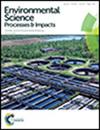Total Quality Management (Tqm) As a Prerequisite For Improving The Competitiveness In Waste Management And Waste Reprocessing Micro, Small And Medium Enterprises To Achieve Business Excellence
引用次数: 0
Abstract
Total Quality Management (TQM) can be defined as a quality management approach centered on quality, based on the participation of all its members and aiming at long term success through customer satisfaction and benefits to all members of the organization and society. Strategic environmental assessment (SEA) process can be broadly defined as a study of the impacts of a proposed project, plan, project, policy or legislative action on the environment and sustainability. In this research, SEA process has been aimed in order to incorporate environmental and sustainability factors in to waste and waste reprocessing project planning and decision making (WPDM) and Climate impact assessment (CIA) process such as project formulation and appraisal of Indo-Matsushita midget electrode (battery carbon rod) plant in 1979 at Tada, sustainable bridge, road and sanitation structure, green building, nuclear power plant, cotton roller ginning plant and concrete that included policies, programs, plans and legislative actions. Sustainable WM & WRM development is a kind of development that meets the needs of the present without compromising the ability and efficacy of future generations to meet their own needs. Environmental Impact Assessment (EIA) process can be defined as the systematic study of the potential impacts (effects) of proposed projects, plans, programs, policies or legislative actions relative to the physical-chemical, biological, cultural, and socioeconomic components of the total environmental product life cycle. The primary purpose of the EIA process is to encourage the consideration of the environment in Organization's WPDM process and to arrive at actions that are environmentally compatible. WPDM process should include the integrated consideration of technical or engineering, economic, environmental, safety, and health, social and sustainability factors in order to achieve business excellence. Prior to the National Environmental Policy Act (NEPA) process in 1970 in the USA, technical and economic factors dominance the World’s Waste Management and Waste Reprocessing Management (WM & WRM) projects. The objective of the study is to conceptualize SEA process for the WM & WRM sector on the basis of fifteen number of sustainable detailed project reports (DPRs) submitted by the extension learners of Diploma in Entrepreneurship and Business Management (DEBM) course conducted by the Entrepreneurship Development Institute of India (The EDI of India) during the research year (RY) 1999 to 2023 under the author’s chancellorship. The design of the study is cross sectional. Environmental Health Impact Assessment (EHIA) process has been conducted for nuclear power plant to consider the safety and health impacts in order to mitigate psychological health loading on workers and nearby residents. Social Impact Assessment (SIA) process can be defined as the systematic identification and evaluation of the potential social impacts (effects) of proposed projects, plans, programs, or legislative actions such that social consideration is encouraged in WPDM process and to arrive at actions that are socially compatible with reference to a sustainable sanitation project. SEA process concerns to environment and sustainability effects in WPDM process and arrive at proposed projects, plans, programs, and legislative actions that are compatible with respect to environment and sustainability issues. International EIA process required multi-disciplinary approach that has been conducted very early stage of Japanese Matsushita carbon rod project in 1982 for strategic environmental assessment. The paper highlights SEA process conducted for certain projects that based on operation and process approach and associated studies for sustainable development. WM & WRM engineering product and process environmental life cycle analysis (LCA) has been conducted for identifying and measuring the impact of civil engineering industrial products on the environment and sustain efficacy by means of mass and energy balance methods. LCA considers the activities related to raw materials, transformation, ancillary materials, equipment, method, market, man power, production, use, disposal and ancillary equipment.As far as waste management and reprocessing management safety is concerned personal protective equipment and materials (PPEMs) that include garments, clothing, gloves, safety shoes, hard hats, safety glasses, shields, respirators, full aprons, safety belts, and other safety items which have to be used by an individual. Such equipment is important for personal protection and for safety. It is the manager’s and supervisor’s responsibility to ensure that they are used. The enactment of worker’s compensation law and occupational disease law shall increase materially the cost of insurance to industry. The increased cost and the certainty with which it is applied will put a premium on accident-prevention work. This cost can be materially reduced by the installation of safety devices. WM & WRM experience has shown that approximately 80% of all the WM & WRM industrial accidents are preventable. EIA and EHIA processes have been conducted for a nuclear power plant to consider the safety and health impacts in order to mitigate psychological health loading on workers and nearby residents. SEA system is a potentially useful element of good environmental management and sustainable development; however, as currently practiced in WM & WRM industries, it is far from perfection. Emphasis should be given in WM & WRM industries on maintaining economic viability of the operation, while in turn taking care to preserve the ecological and social sustainability of the country. International EIA process required multi-disciplinary approach that has been conducted very early stage of Indo-Matsushita Midget electrode projecting 1982 at Tada for economic, ecological and social sustainability.全面质量管理(Tqm)是提高中小微企业废物管理和废物后处理竞争力、实现卓越经营的前提
全面质量管理(TQM)是一种以质量为中心,以全体成员参与为基础,以顾客满意和组织和社会全体成员的利益为目标,实现长期成功的质量管理方法。策略性环境评估过程可广义地定义为研究建议项目、计划、项目、政策或立法行动对环境和可持续发展的影响。在本研究中,环境影响评估过程旨在将环境和可持续性因素纳入废物和废物后处理项目规划和决策(WPDM)和气候影响评估(CIA)过程中,如1979年印度松下小电极(电池碳棒)工厂的项目制定和评估,可持续桥梁,道路和卫生结构,绿色建筑,核电站,包括棉辊轧花厂和混凝土厂的政策、方案、计划和立法行动。可持续的WM &;水资源管理开发是一种既满足当代人的需求,又不损害后代人满足自身需求的能力和效能的开发。环境影响评价(EIA)过程可以定义为对拟议项目、计划、方案、政策或立法行动的潜在影响(影响)进行系统研究,这些影响(影响)与整个环境产品生命周期的物理-化学、生物、文化和社会经济组成部分有关。环境影响评估程序的主要目的是鼓励在本组织的工作规划过程中考虑环境因素,并采取与环境相容的行动。WPDM过程应包括综合考虑技术或工程、经济、环境、安全和健康、社会和可持续性因素,以实现卓越的业务。在1970年美国国家环境政策法案(NEPA)之前,技术和经济因素主导了世界废物管理和废物再处理管理(WM &WRM)项目。本研究的目的是概念化WM和amp的SEA过程;在作者担任校长期间,在1999年至2023年的研究年度(RY)期间,印度创业发展研究所(印度EDI)举办的创业和商业管理文凭(DEBM)课程的扩展学习者提交了15份可持续详细项目报告(DPRs)。本研究采用横断面设计。对核电站进行环境健康影响评价(EHIA),考虑其对安全和健康的影响,以减轻对工作人员和附近居民的心理健康负荷。社会影响评估(SIA)过程可以定义为系统地识别和评估拟议项目、计划、方案或立法行动的潜在社会影响(效果),从而在WPDM过程中鼓励社会考虑,并得出与可持续卫生项目相适应的行动。环评过程关注环境和可持续发展过程对环境和可持续发展的影响,并得出与环境和可持续发展问题相一致的拟议项目、计划、计划和立法行动。1982年日本松下碳棒项目的早期战略环境评价采用了多学科的方法进行国际环境影响评价。文件重点介绍了为若干项目所进行的环评过程,这些项目是基于运作和过程方法,以及有关可持续发展的研究。WM和WRM工程产品和过程环境生命周期分析(LCA)通过质量和能量平衡方法来识别和测量土木工程工业产品对环境的影响和维持效能。LCA考虑与原材料、转化、辅助材料、设备、方法、市场、人力、生产、使用、处置和辅助设备相关的活动。就废物管理和再处理管理安全而言,涉及个人防护设备和材料(PPEMs),包括服装、衣服、手套、安全鞋、安全帽、安全眼镜、盾牌、呼吸器、围裙、安全带和其他必须由个人使用的安全物品。这些设备对个人保护和安全很重要。这是经理和主管的责任,以确保他们的使用。劳工赔偿法、职业病法之制定,将大幅增加产业之保险费用。成本的增加和应用的确定性将使事故预防工作更加重要。 安装安全装置可以大大降低这一成本。WM和水资源管理经验表明,大约80%的水资源管理水资源工业事故是可以预防的。为减轻对工作人员和附近居民的心理健康负担,对某核电站进行了环境影响评估和环境影响评估,以考虑其对安全和健康的影响。环评制度是良好环境管理和可持续发展的潜在有用因素;然而,正如WM &水资源管理行业,还远远不够完美。重点应放在WM &;水资源管理行业在保持经济可行性的同时,也要注意保持国家的生态和社会的可持续性。国际环境影响评估过程需要多学科的方法,这已经在印度-松下微型电极项目的早期阶段进行,该项目计划于1982年在多田进行,以实现经济、生态和社会的可持续性。
本文章由计算机程序翻译,如有差异,请以英文原文为准。
求助全文
约1分钟内获得全文
求助全文

 求助内容:
求助内容: 应助结果提醒方式:
应助结果提醒方式:


